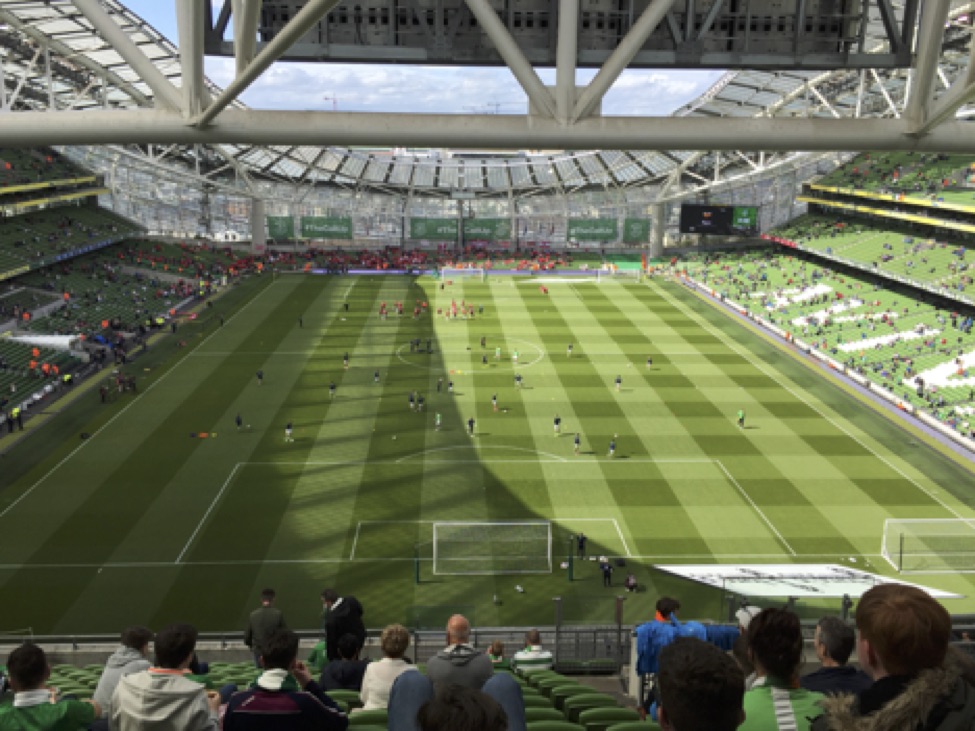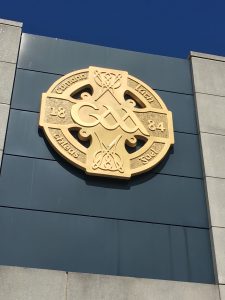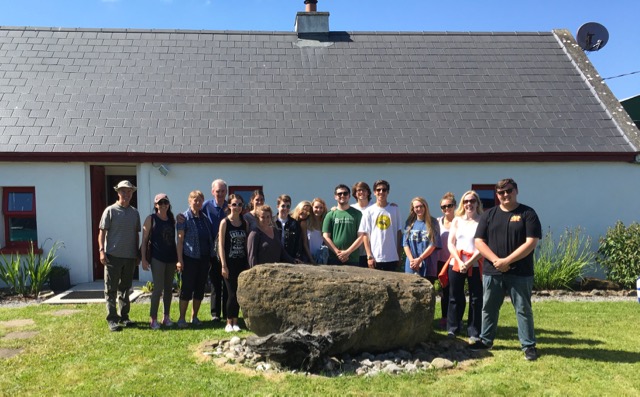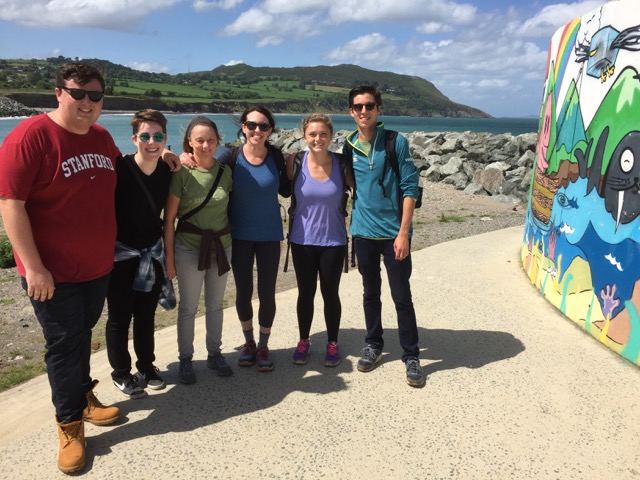by Raegan Whiteside
 Cong is a small town that is seen in the film The Quiet Man (John Ford, 1952) that was assigned for the Irish Film Studies class and where we stopped to take a short break on afternoon.
Cong is a small town that is seen in the film The Quiet Man (John Ford, 1952) that was assigned for the Irish Film Studies class and where we stopped to take a short break on afternoon.
When looking at the town, in relation to the film, you get the similar feeling as seen in the small village in the film. Obviously, this town is more modern, but it has the same small-town atmosphere as in The Quiet Man in the fact that it’s quaint and as you walk down the few streets that make up the modest town you can picture the citizens of the community knowing their neighbors closely and intimately.
 While it was disappointing to see that Cong has been largely commercialized after the making of this film, it was interesting to walk down the forest lined street to St. Mary’s Church and be able to picture the scene of Sean Thornton (John Wayne) playing “patty-fingers” in the holy water clearly because of the seclusion and calmness of the location.
While it was disappointing to see that Cong has been largely commercialized after the making of this film, it was interesting to walk down the forest lined street to St. Mary’s Church and be able to picture the scene of Sean Thornton (John Wayne) playing “patty-fingers” in the holy water clearly because of the seclusion and calmness of the location.
Similarly, it was refreshing to walk on the path by the river in which Father Lonergan (Ward Bond) attempted to fish multiple times in the film and to actually see fishermen in those locations. I only realized once visiting the sites how peaceful the aura is in these parts. Thus, looking back at the film, I find these scenes quite humorous because of how many times this serene setting was interrupted in the movie by Mary Kate Danaher (Maureen O’Hara) and Father Paul (James O’Hara) and the annoyance that Father Lonergan probably had.
 By one fishing location a group of tourists were gathered watching a man fish and you could hear/see their silent (sometimes not silent) cheers and I immediately remembered the scene of Marky Kate cheering on Father Lonergan when he almost caught the fish during their discussion.
By one fishing location a group of tourists were gathered watching a man fish and you could hear/see their silent (sometimes not silent) cheers and I immediately remembered the scene of Marky Kate cheering on Father Lonergan when he almost caught the fish during their discussion.
Overall, I thought Cong was a charming, picturesque, small town that connected a lot with the film both in scenery and character. I enjoyed not only seeing the settings of the movie in person, but experiencing the different locations and connecting them with the film. Not to mention, the Chai Tea Latte I had in a Puddleducks Café was delicious.















